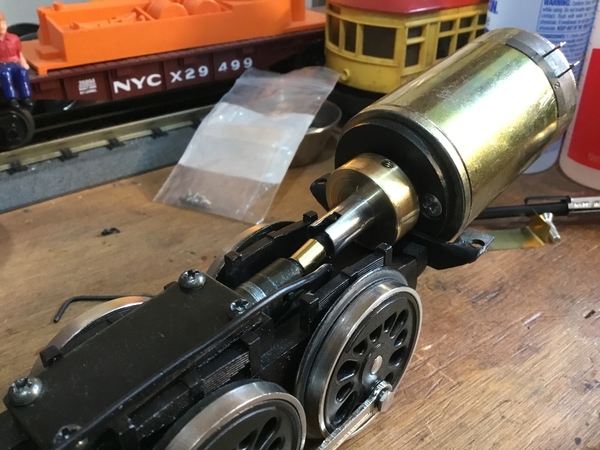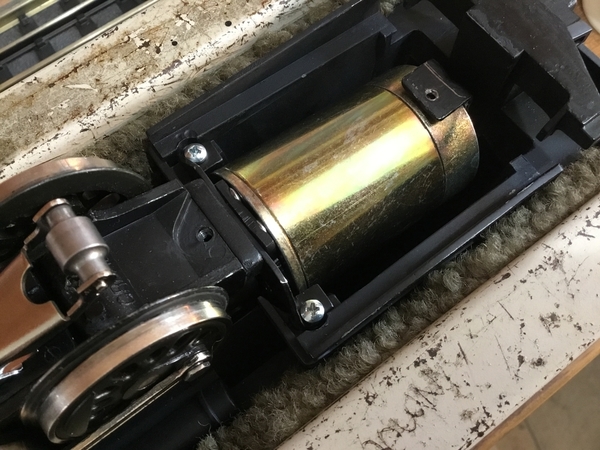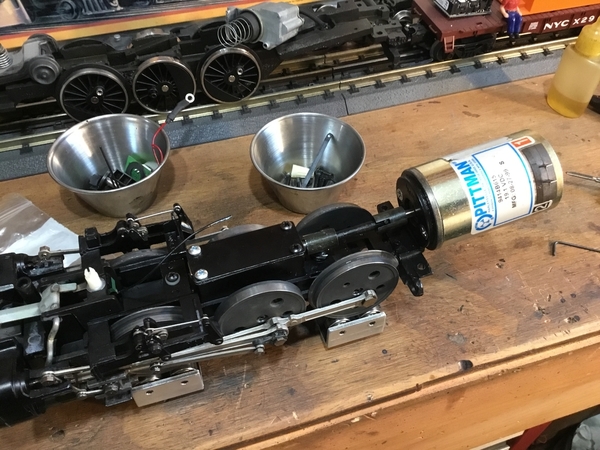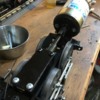I opened my Hudson Yellow Belly (6-18043) intending to work on the motor and decided to take a look at the smoke unit also.
Smoke Unit: It works, but it's anemic. Much to my surprise when I opened it up, there was no wicking material in the bowl, just the resistor wrapped. I've read and have in the past when servicing fan driven units, removed the wrap around the resistor. With this 'puffer unit' I thought I'd check in here first. This is a puffer unit, but I've not seen one in pics in this Forum (ALEXM posted some great rebuilds, but none looked exactly like mine). I'm thinking cutting off the wrap around the resistor and putting some wicking material in the bowl would be an upgrade. Would I damage the unit by doing what I propose? I studied the parts blow-up pics on Lionel's site but I didn't see wicking or a resistor.
Pullmor Motor: In a different string (https://ogrforum.ogaugerr.com/...6#123059522707410746) it was suggested I do some maintenance on the motor. I removed the shell and now have no idea how I get to the brushes to replace them or to the commutator to clean it. I just can't find any screws that would let me do that. I did see what looks like a "hex 'bolt'? that might be the key to remove the motor, but that seems odd. If anyone has worked on these engines/motors and can tell me how to remove the motor and open it up, please advise. The parts blow-up pics on Lionel's site didn't help me much. Thanks.















